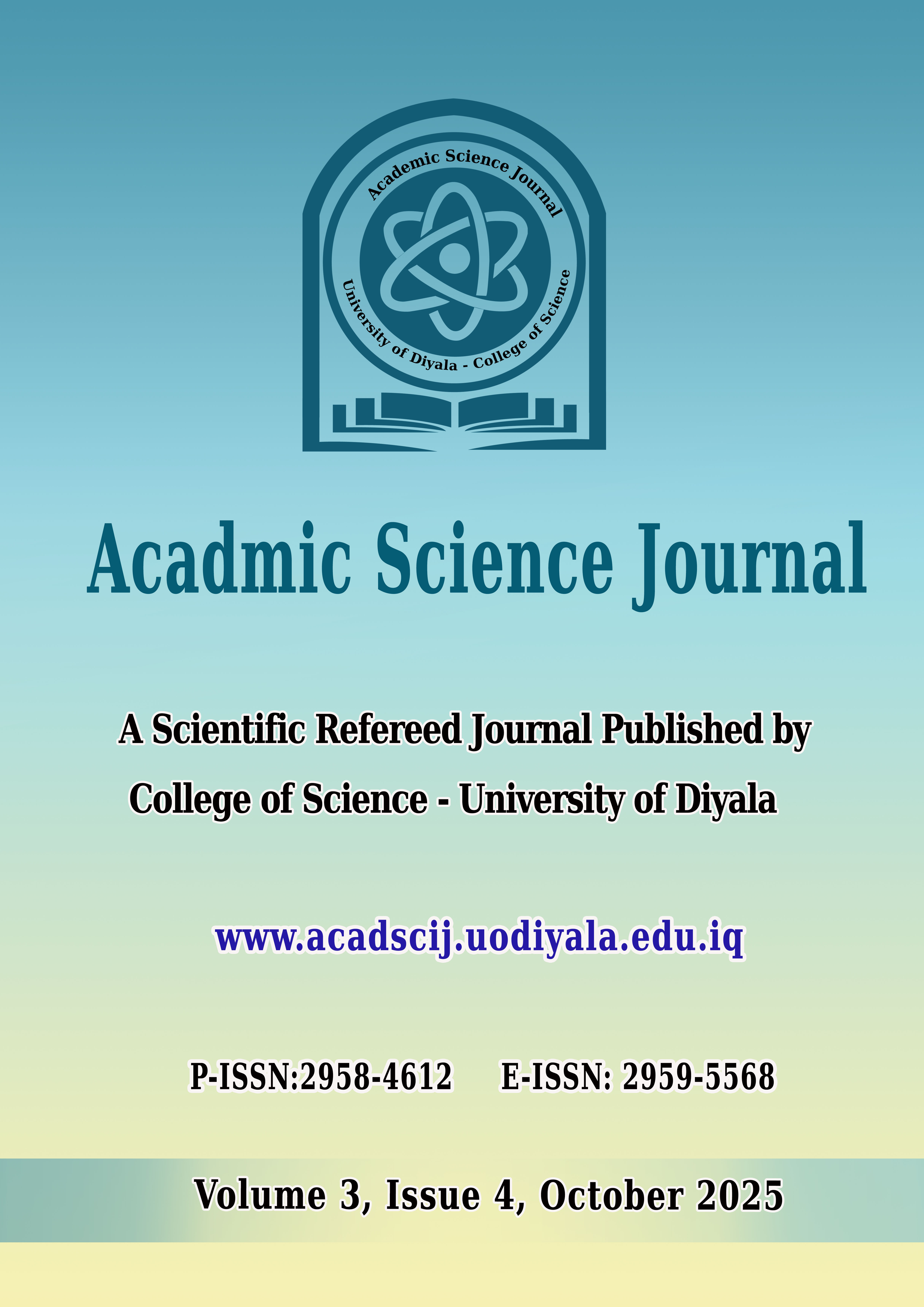Microfacies and Paleoenvironment Conditions of Kometan Formation in Dokan area, northeast of Iraq
DOI:
https://doi.org/10.24237/ASJ.03.04.912Abstract
The well-bedded and white chalky to white grey limestone of the Kometan Formation is Late Turonian – Santonin in age. The rock samples were taken from Qalat area in the Sulaymaniyah governorate in northern Iraq and studied under many different microscopes.
The main aims of the paper are to study the microfacies of the Kometan Formation and interpretation of the paleodepositional environment based on the detailed examination of thin sections prepared from samples selected from the Kometan Formation.
Muddy, marly, and brecciated limestone are the lithology of the Kometan Formation determined by petrographic studies based on the characteristics of grain and matrix types. The microfacies analysis of the samples from the Kometan Formation revealed three main microfacies and two submicrofacies. The first one is foraminiferal lime mudstone, these microfacies existed in the first part of the formation after the Shiranish Formation characterized by a significant amount of micrite with few amount of fossil content. The second one is wackestone microfacies, with two submicrofacies including Oligosteginal wackestone submicrofacies and Globotruncana wackestone submicrofacies. These microfacies are characterized by a considerable number of skeletal grains and the groundmass consists of micritic materials. The microfacies are located in the center of the formation and contain the major stylolite with a high ratio of chert nodules. The third main microfacies is planktonic foraminiferal packstone microfacies, these microfacies are characterized by a high ratio of skeletal grain and a minor amount of micrite which form the groundmass of the facies. This microfacies is exposed at the adjacent zone to the major fault between Kometan and Qamchuqa formations. The paleoenvironment of the Kometan Formation is a deep-shelf marine environment passed to the continental slope environment based on the grain type characteristics and depositional textures identified in the present study.
Downloads
References
[1] R. C. Bellen, H. V. Dunnington, R. Wetzel, and D. M. Morton, Lexique stratigraphique international Asia, fascicule, 10a, Iraq, (Center National de la Recherché Scientifique, Paris 333, 1959)
[2] H. K. Karim, S. T. Al-barzınjy, and A. K. Polla, Geology and critical review of the Upper Cretaceous zagros chalky limestone (kometan Formation) from Sulaimani governorate, Northeastern Iraq, Bulletin of the Mineral Research and Exploration, 157(157), 59-74(2018), DOI(http://dx.doi.org/10.19111/bulletinofmre.428342)
[3] T. Buday, and S.Z. Jassim, the Regional Geology of Iraq: Vol. 2, Tectonism, Magmatism, and Metamorphism. I.I. Kassab, and M. J. Abbas, (Eds.), (GEOSURV, Baghdad, 1987)
[4] S. Z. Jassim, and C. Jeremy, Goff, eds., (Geology of Iraq, DOLIN, sro, distributed by Geological Society of London, 2006)
[5] H. K. Kamal, and A. Zardasht, Tectonical history of Arabian platform during Late Cretaceous An example from Kurdistan region, NE Iraq, 1-14(2009)
[6] S. A. Hussain, and S. S. AL-Sheikhly, Paleoecology of Albian–Santonian succession of Surdash to Shaqlawa area, NE Iraq, Iraqi Journal of Science, 56(2A), 1076-1097(2015)
[7] F. M. D. Al-Tememmy, Micropaleontological study of the Kometan formation to determine its paleoecology, PhD diss., University of Baghdad, Baghdad, Iraq, 152(1986)
[8] T. A. Hashem, Biostratigraphy of the Late Cenomanian- Early Campanian Succession, Sulaimaniya, Iraq, M.Sc. thesis. Department of Geology, College of Science, Uni. of Baghdad, Baghdad, Iraq, 65(2010)
[9] R. J. Dunham, Classification of carbonate rocks according to depositional textures, 108-121(1962)
[10] J. L. Wilson, and J. L. Wilson, The stratigraphy of carbonate deposits, Carbonate Facies in Geologic History, (Springer, New York, NY, 1975)
[11] E. Flügel, and A. Munnecke, Microfacies of carbonate rocks: analysis, interpretation and application, Vol. 976, (Berlin: springer, 2004)
[12] A. D. Miall, Principles of Sedimentary Basin Analysis, 2nd edition, (Springer Verlag, New York, 1990), 668
[13] P. Sharland, R. Archer, D. M. Casey, R. B. Davies, S. Hall, A. P. Heward, A. D. Horbury, and M. D. Simmons, Arabian Plate sequence stratigraphy, GeoArabia SP2, (Gulf Petro Link, Bahrain, 2001), 371
[14] F. A. A. Lawa, Late Campanian–Maastrichtian sequence stratigraphy from Kurdistan foreland basin, NE/Iraq, Journal of Petroleum Exploration and Production Technology, 8, 713-732(2018), DOI(https://doi.org/10.1007/s13202-017-0424-1)
[15] P. A. Scholle, D. G. Bebout, and C. H. Moore, eds., 33, Carbonate depositional environments, (AAPG Memoir, 1983)
[16] Q. Li, and B. McGowran, Miocene upwelling events: neritic foraminiferal evidence from southern Australia, Australian Journal of Earth Sciences, 41(6), 593-603(1994)
[17] V. K. Sissakian, and S. Fouad, Geological map of Iraq, scale 1: 1000 000, 2012, Iraqi Bulletin of Geology and Mining, 11(1), 9-16(2015)
Downloads
Published
Issue
Section
License
Copyright (c) 2025 CC BY 4.0

This work is licensed under a Creative Commons Attribution 4.0 International License.





